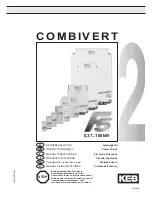
10
User's Guide
ADI-2 FS © RME
!
7. Clock Section
The ADI-2 FS clock section is easy to use and easy to understand. It enables a flexible opera-
tion of the AD- and DA-converter with internal clock or the digital input signals. A clear display of
the lock and sync state further improves the clock section's usability. Note: The chosen clock
state is valid for both AD- and DA-conversion simultaneously.
The key DIG IN determines both the digital input being used for the DA-converter (coaxial or
optical) and the external clock source, in case CLOCK – DIG IN has been selected. The lock
state of the ADI-2 FS is indicated by a blinking (error) or constantly lit (Ok) DIG IN LED (COAX,
OPT).
In order to avoid a disturbing continuous flashing of the selected input in Master mode (internal
clock) when the digital input signal is missing, the input selection is visualized by a constant but
dimmed LED. If an input signal is present but not synchronous, this is indicated by the CLOCK
LED flashing.
Using external clock, the ADI-2 FS shows the range of the input
signal's sample rate via the CLOCK LEDs. An external SPDIF or
AES signal in Double or Quad Speed will cause the DS or QS LED
to light up. With ADAT the input sample rate is always Single
Speed. The real sample rate (Double or Quad Speed) therefore has
to be set up manually by the user (push the CLOCK button so that
either DS or QS light up).
Key CLOCK
This key sets the sample rate of the ADI-2 FS, the unit will then be
in clock mode master. However, with DIG IN selected (INP in the
picture to the right), the sample rate of the present digital input
signal will be used as clock reference. The device then turns into
clock mode slave.
Each push on the key CLOCK raises the sample frequency. When
reaching the setting 48 kHz the DS LED lights up. The chosen fre-
quency is now multiplied with a factor of 2. When reaching 48 kHz
(now 96 kHz) again, the QS LED lights up. The chosen frequency is
now multiplied with a factor of 4. When reaching 48 kHz (now 192
kHz) again, the DIG IN LED lights up, then DIG IN DS, then DIG IN
QS. Next the sample rate is back to 32 kHz and the scheme starts
from the beginning.
In case of SPDIF the incoming signal defines the status DS and QS. A manual selection is only
necessary with ADAT. If an ADAT input signal is present, CLOCK also runs through DIG IN DS
and DIG IN QS after DIG IN (INP).
Clock mode D/A Internal
Clocking the DA-converter from the internal clock requires a synchronous operation of the at-
tached device. To guarantee this the external device connected to the ADI-2 FS has to syn-
chronize itself to the ADI's clock via its SPDIF or ADAT output.
The ADI-2 FS has to be master, all attached devices slave. To prevent clicks caused by imper-
fect or even no synchronisation, a special method called
SyncCheck
compares the synchronic-
ity of the incoming data with the internal clock of the ADI-2 FS. The current state is indicated by
a blinking (error) or constantly lit (Ok) CLOCK LED.
Only one device can be master in a digital system! When the ADI-2 FS operates with
internal clock, all other devices have to be slave.
Содержание ADI-2 FS
Страница 17: ...User s Guide ADI 2 FS RME 17 14 Block diagram...






































